Lecture 5: Women’s Networks: Opportunities and Limitations
Professor Hempton began this lecture thanking the contributors to this Gifford blog for their stimulating responses to his lectures. He also mentioned how it takes a village to create these lecturers and especially wanted to thank his community at Harvard and the women’s network that meets there. Dr Nash, a post-doctoral researcher and womanist theologian will give a response after the summary of the lecture. As always, the video will also be posted soon.
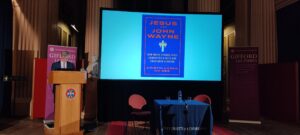 Professor Hempton clearly set out his framework for examining women’s networks in this lecture, inspired by Saba Mahmood and her wish for ‘an analytical language for thinking about modalities of agency that exceed liberatory projects (feminist, leftist, or liberal)’ (Politics of Piety: The Islamic Revival and the Feminist Subject, 2012). Hempton warned that historians, sociologists and other commentators often have pre-assigned values that they often attempt to transplant onto other cultures to judge the agency of women. Instead, it is important to pay attention to where empowerment can differ from our own conception. Hempton explains, ‘women within religious traditions, however patriarchal they appear to be, have found all kinds of ways of finding empowerment and fulfilment that may not fit well into progressive emancipatory paradigms.’ This lecture highlights the different ways women’s religious networks empower and give agency to women, even when they may seem contradictory to one another or our own understandings of female liberation. Not to judge, but to highlight how they counter, run alongside, challenge or are simply different to male networks. Hempton categorizes these networks into five types: networks that operate within religious traditions for religious purposes, networks not started by women that come to be dominated by women, transnational networks where women exercise leadership (with some cultural constraints), feminist networks designed to pressure male-dominated structures towards change, and networks made by women on the margins to create solidarity.
Professor Hempton clearly set out his framework for examining women’s networks in this lecture, inspired by Saba Mahmood and her wish for ‘an analytical language for thinking about modalities of agency that exceed liberatory projects (feminist, leftist, or liberal)’ (Politics of Piety: The Islamic Revival and the Feminist Subject, 2012). Hempton warned that historians, sociologists and other commentators often have pre-assigned values that they often attempt to transplant onto other cultures to judge the agency of women. Instead, it is important to pay attention to where empowerment can differ from our own conception. Hempton explains, ‘women within religious traditions, however patriarchal they appear to be, have found all kinds of ways of finding empowerment and fulfilment that may not fit well into progressive emancipatory paradigms.’ This lecture highlights the different ways women’s religious networks empower and give agency to women, even when they may seem contradictory to one another or our own understandings of female liberation. Not to judge, but to highlight how they counter, run alongside, challenge or are simply different to male networks. Hempton categorizes these networks into five types: networks that operate within religious traditions for religious purposes, networks not started by women that come to be dominated by women, transnational networks where women exercise leadership (with some cultural constraints), feminist networks designed to pressure male-dominated structures towards change, and networks made by women on the margins to create solidarity. 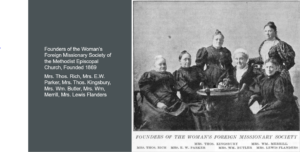
The first case study that Hempton drew to our attention was how his own understanding of Methodism has been changed since he began actively seeking women’s stories in the movement. ‘Once the light switch was turned on that Methodism was a predominantly women’s movement, a whole fresh set of analytical categories came into view.’ Concentration around political culture, institution building, internecine squabbles, theological polemics, conflicts based on social class, and anti-Catholicism was matched with a greater preoccupation with physical pain, suffering, and the fragility of life occasioned by their own experiences of childbirth, infant mortality, primitive medicine, visitation of the sick and vulnerable, and the mutual support of other women.
Similarly today, Pentecostalism is dominated by pious, passionate women. Choosing Aglow International (1967), the largest interdenominational women’s network probably in the world, Hempton describes it as having ‘identity, vision, and mission statements, a standard charismatic evangelical statement of faith emphasizing the baptism of the Holy Spirt and tongue-speaking, and is essentially a worldwide network of small groups of women meeting for prayer, Bible study, and social action.’ These small groups across the world work for social justice in their own contexts, for issues such as sex trafficking, but they also have a theology that emphasizes that true liberation is found in voluntary submission to divine authority. R. Marie Griffiths emphasizes how their lives of disciplined devotion give the women agency, but also holds that their new selves are constructed in patriarchal conceptions of authority. Nevertheless, with a women President, 9/11 female board members and a strong missionary desire, the movement is thriving.
Moving away from the contemporary, Hempton takes us back to the influx of women missionaries from the US and Europe in the 20th Century. ‘Disrupted by two world wars, fierce theological conflicts between liberals and fundamentalists, the demise of colonialism and the rise of nationalist movements, and persistent contests between female empowerment and male instruments of control, women frequently found themselves embroiled in mega changes which they could not control and from which they were often victims.’ Especially where women where often named as an asterisk (*) next to their husband’s names, even if they were the skilled missionary in the relationship (nurse or botanist for example), tracing the history of women missionaries is a challenging task. Though women were not immune to the difficulties associated with Protestant missions, ‘American women missionaries, however sensitive they were to indigenous cultural sensibilities, generally believed that ‘all people deserved the triple advantages of Protestant Christianity, American civilization, and American forms of government.’ Though women’s agency often also undermined these, battling against the attempt of bureaucratic control from men, women were significant for teaching and therefore building up indigenous leaders in defiance to racist narratives.
The reality of Christianity now being a religion predominantly in the non-Western world has also shaken more unlikely Christian sects. In 1996, or the first time, more Mormons lived outside of the United States than inside. Although the mission of Latter-Day Saints had extended to Europe much earlier (with an important (shiny) national headquarters in London and a thriving network in Wales) the central hub of Utah was unquestioned. Yet three policy changes, ‘one in 1898 adding women to the missionary ranks, the second in 1978 when the Church issued a statement effectively ending racially based restrictions to the priesthood, and the third in 2012 lowering the age requirement (to 19 from 21) for Mormon women missionaries,’ allowed more women than ever before to take advantage of this resource rich church and extended the next from being centered in the Western world. Women in the Global South could opt into language training, financial help, and a sense of belonging to ‘a global network of Mormonism.’ The non-inculturation of the church also helped its global image of international uniformity and truth possession. Yet the image of the “perfect, domesticated, middle-class, put-together housewife” creates an unattainable image for women everywhere.
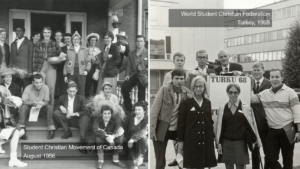 Another network that gave multitudes of opportunities to young women were those of the World Student Christian Federation, Student Christians Movements, and YMCA’s. ‘For young women in the 1950s, 60s, and 70s, especially the growing cohorts of college students, these organizations introduced them to the great social and political issues of the day, including racism, civil rights, colonialism, and anti-Vietnam war activism.’ The SCM in Britain in the 1950’s had a famous saying of reading the bible in one hand and having the newspaper in the other’ (Robin Boyd, The Witness of the Student Christian Movement). It exposed young women to radically new ways of seeing the world, both through their theology, politics and also international travel possibilities. International conferences such as the 1959 Eighteenth Ecumenical Student Conference at Athens, Ohio attended by students from all over the world and addressed by Martin Luther King Jr stand out as important examples. Women within these student networks also shared an important sense of fellowship and solidarity, as revealed by their autobiographies. Though, even in these progressive networks, some parts of women’s identities were off-bounds, even in the 1960’s and 70’s.
Another network that gave multitudes of opportunities to young women were those of the World Student Christian Federation, Student Christians Movements, and YMCA’s. ‘For young women in the 1950s, 60s, and 70s, especially the growing cohorts of college students, these organizations introduced them to the great social and political issues of the day, including racism, civil rights, colonialism, and anti-Vietnam war activism.’ The SCM in Britain in the 1950’s had a famous saying of reading the bible in one hand and having the newspaper in the other’ (Robin Boyd, The Witness of the Student Christian Movement). It exposed young women to radically new ways of seeing the world, both through their theology, politics and also international travel possibilities. International conferences such as the 1959 Eighteenth Ecumenical Student Conference at Athens, Ohio attended by students from all over the world and addressed by Martin Luther King Jr stand out as important examples. Women within these student networks also shared an important sense of fellowship and solidarity, as revealed by their autobiographies. Though, even in these progressive networks, some parts of women’s identities were off-bounds, even in the 1960’s and 70’s.
Also motivated by mission are Catholic religious orders, which have roots way before the Protestant Reformation. Women’s orders expanded to Latin America, the first being in Peru in 1558, carving out a sacred space but also playing a role in the ‘construction of Spanish colonial hegemony.’ The three colonial convents of Cuzco, Santa Clara (1558), Santa Catalina (1605), and Santa Teresa (1673) evolved into being little cities dedicated to poverty, chastity, both to God and to the patriarchal fathers of the Cuzco colonial economy (through property ownership, dowries, lending practice and produce). Their existence could never be completely separate from the male orders or the surrounding context. In New Orleans the Ursulines lived under the French Empire until 1767, then the Spanish until 1803 and then became part of the American Republic. According to Emily Clark these Catholic female religious communities threatened male, Protestant political culture at the intersection of race and gender and blurred conventional racial lines by teaching all children (not without benefited from slave ownership themselves).
Catholic feminist movements that emerged between 1960 and 1980, empowered by the reforms in Vatican II, took another path. They held a strong connection between their faith and feminist principles. Early models sought to drive dialogue with the male hierarchy on issues such as reproductive rights and ordination. Other left (the institution, not the tradition or piety), and created their own independent networks. Similarly, some Mormon feminists have directly protested against policies on LGBTQ rights, all-male priesthood, and ideal family portrays. They have to walk a tightrope, ensuring their voices are heard but also not being excommunicated.
The hierarchy of evangelical Protestantism is less-structured, but women share concerns with Catholic and Moron women. Hempton uses the recent work of Kristen Kobes Du Mez and her ‘Jesus and John Wayne (2020)’ and applauds her convincing argument (not the reality) that ‘evangelical support for Trump was no aberration, nor was it merely a pragmatic choice. It was, rather the culmination of evangelicals’ embrace of militant masculinity, an ideology that enshrines patriarchal authority and condones the callous display of power, at home and abroad (p.3).’
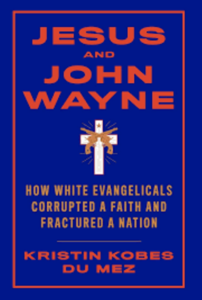
Though Hempton also draws attention to the significance of ‘race, class, and social location that contribute to voting behavior’ too. Kate Bowler’s idea that women in the evangelical public square ‘must be pretty, but not immodest, exemplary, but not fake, vulnerable to sin, but not deviant’ highlights the reality of the patriarchal culture of control. With our current social reality, and picking up on Shadaab Rahemtulla’s question, this set of values seems very close to those in non-religious circles too. Women have resisted and are creating resistance networks fashioning a new kind of evangelicalism in America. Hempton highlights the extra challenge of intersectionality for Black Americans however, where issues of race that can be tackled collectively often override subjects of female agency and empowerment. He highlights initiatives such as the WCC’s Pan African Women’s ecumenical Empowerment Network’ as good examples of creating instructive and supportive spaces for women.
Hempton ends the lecture by reflecting on the nucleus that binds these networks. ‘Womanhood itself is at the heart of the religious nucleus that bound together the Christian sisterhoods of women’s networks as their shared sets of experiences and values gave rise to a distinctive female consciousness whatever the specific circumstances that called any given network into existence. Perhaps more than anything that is the secret of their enduring strength and influence.’
Response
An Epistemological Awareness from the Cracks
In the wake of George Floyd’s murder, many of our universities have attempted to find ways to address race based colonialism, and eradicate the painful legacy of these structural forms of oppression. As such, I began working with committee to diversify the curriculum of a School of Religion in England, thereby adding in resources from women and men of color. I suggested we might benefit by expanding the academic staff. As a womanist theologian, and the only person of color within this committee of about 12, I would like to see course offerings expand to include womanist theology, Majerista theology, Asian women’s theologies, Native women’s theologies. The response I received from the manager of the modules was blunt. “We would never hire you because we would all be sacked. Where would we go?”
The notion that we must work from scarcity models, that women of color must not be hired because, doing so would threaten the existence of White women is not a new concept. Indeed, much of the world is fraught with White resentment and anger as fear of the “Black and Brown” populations in the Western Hemisphere continue to grow, contributing to a White replacement theory significantly amplified in 2021. Yet, both historical and contemporary settings, it is articulated that White feminists have embraced women of color in ways which imply that there is no tension between White women and non-White women. That would not be entirely true, however.
To consider this further, we could explore the way Prof. Hempton’s lecture identified the women’s networks as “marked by gender, racial and class disparities that are not necessarily associated with freedom or emancipation.” It is this very ambiguous relationship with freedom that concerns African descended women who, overwhelmingly, believe emancipation is central to their religious and theological discourse.
By examining this observation, it is important to note that even when women’s networks are intended to move toward emancipation, the constraints which shape such discourse can embrace both freedom and bondage simultaneously. Indeed, such networks often exclude women of color who often fall in the cracks. For example, Susan B. Anthony is heralded as a woman who pioneered the movement for U.S. women’s suffrage. Feminists are often silent over her statement, “I will cut off this right arm of mine before I will ever work or demand the ballot for the Negro and not the woman.” Inherent in this passionate declaration is the inability to recognize that Negroes (i.e., African descended people) also have women in their communities.
The 1890s creation of Black women’s club movements, including the 1896 creation of the National Association of Colored Women, demonstrates the determination of Black women to use their religious beliefs to create political agency despite the exclusionary politics from many White women’s groups.
Women of color in general, Black women in particular, often fall in the cracks. My reflection is an epistemological awareness from the cracks. This epistemological awareness identifies: 1) 19th Century American club women’s movements as a case study in the way gendered concerns were interpreted through the lens of race, 2) Christianity as one example of the way women interpreted both gendered and racial concerns regarding political activism and 3) the current need for women to use their religious ethos to create a global framework for equity and equality.
Time constraints prohibit a full examination of this topic as outlined. My reflection will interrogate the second point – Christianity as one example of the way women interpreted both gendered and racial concerns regarding political activism.
I agree with Professor Hempton’s reflection of Ruth Bader Ginsburg, who stated that women should be wherever decisions are being made. The question is, who has the right to identify as a woman and which women should we welcome to the table for decision making? According to historians such as Deborah Gray White, author of Too Heavy a Load, there were stark differences in Black and White women’s suffrage movements which were frequently demarcated along racial lines. Says White,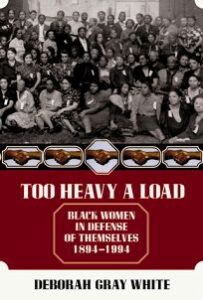
‘This sense of real equality with Black men made the Black woman’s club movement different from its White counterpart of the period. Some scholars have argued that, essentially, Black clubwomen worked for their race, and White club-women worked primarily for improvement of the gender, and only occasionally for their communities’ (White, 1999, 39).
White goes on to state that Black women thought the networks for suffrage would enable them to work with White women to create a national exposure of the issues all women bring to the fore, not only some women. Racism frequently prohibited this partnership.
‘[Black women] were bitterly disappointed, therefore, when so many White women’s groups endorsed the same malicious stereotypes as their men. When White women set themselves apart, they became part of the burden Black women had to carry’ (White, 1999, 40).
Black women, in this time period, often worked on farms in the American South, and as domestics in the North. They were subjected to unmitigated sexual violence in addition to other forms of violence such as with lynchings. They spoke on behalf of their community to create a dignity discourse that would meet the needs of Black women within the body politic. This line of demarcation is still evident today. Black feminist, Audre Lorde, aptly says,
‘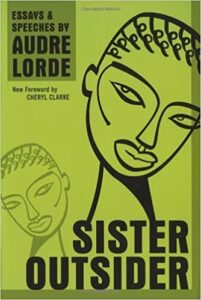 As White women ignore their built-in privilege of Whiteness and define woman in terms of their own experience alone, then women of Color become “other,” the outsider whose experience and tradition is too “alien” to comprehend. An example of this is the signal absence of the experience of women of Color as a resource for women’s studies courses’ (Lourde, 1984, 117).
As White women ignore their built-in privilege of Whiteness and define woman in terms of their own experience alone, then women of Color become “other,” the outsider whose experience and tradition is too “alien” to comprehend. An example of this is the signal absence of the experience of women of Color as a resource for women’s studies courses’ (Lourde, 1984, 117).
I would add that women of color must be added to our curriculum in Divinity. Further, we would do well to identify and pursue women of Color, Black women in particular, to teach in Divinity. This embraces the radical idea that Black women also know God, and have a religious epistemology worthy of engagement. Why is it that White women are able to often embrace networks and modes of being that exclude women of color? Lorde is also helpful here, as she states,
‘White women face the pitfall of being seduced into joining the oppressor under the pretense of sharing power. This possibility does not exist in the same way for women of Color. The tokenism that is sometimes extended to us is not an invitation to join power; our racial “otherness” is a visible reality that makes that quite clear. For White women there is a wider range of pretended choices and rewards for identifying with patriarchal power and its tools’(Lourde, 1984, 118-119).
I am thankful to Professor Hempton’s thoughts regarding women’s networks. His treatment of this subject has been honest and well researched. Archives for Black women’s club movements is a good place to explore the often ignored critique offered by Black women. As with my own contemporary experience, it is quite possible that rhetorical devices imply a diversity that has not been realized. I trust these observations will engender a fruitful discussion about the way women create religious networks. In particular, I hope this has provided fresh insight into the often overlooked epistemological awareness from within the cracks of this discourse.
Lecture Video




I was thrilled when i saw this lecture appear. The topics covered and the depth of information was fantastic. It would be nice to have more lectures like this and get them promoted more. May be worth contacting Engage Branding to see if they can help.